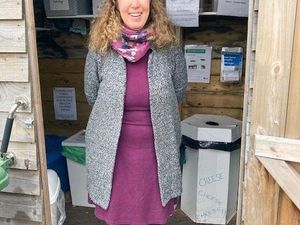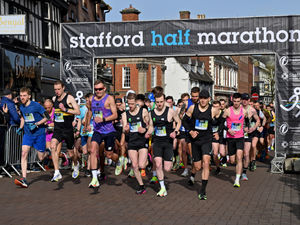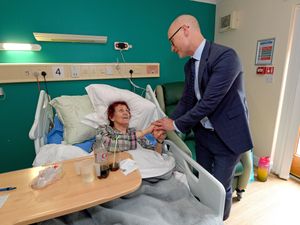Where is your school in new league table?
There was joy and disappointment for the region's schools today as league tables on how well teenagers are performing in English, maths and science were published.There was joy and disappointment for the region's schools today as league tables on how well teenagers are performing in English, maths and science were published. The Key Stage 3 (KS3) results released today revealed Sandwell, Wolverhampton and Walsall are all performing badly in the three core subjects. Dudley is the best-performing borough in the region, rising to 77th in the national list of 149 local authorities. Wolverhampton rose two places to 132nd in the table, while Walsall fell to 106 and Sandwell dropped to second from bottom at 148. Staffordshire dropped to 54 from last year's league table position of 48. Delighted councillor Liz Walker, cabinet member for children's services in Dudley, said success was down to simple hard work. She said: "We are extremely proud of the results achieved by our pupils this year as we have improved yet again. I would like to congratulate all of the staff, parents and pupils and hope they can continue these excellent results on into their GCSE exams." Read the full story in the Express & Star
There was joy and disappointment for the region's schools today as league tables on how well teenagers are performing in English, maths and science were published.
The Key Stage 3 (KS3) results released today revealed Sandwell, Wolverhampton and Walsall are all performing badly in the three core subjects. Dudley is the best-performing borough in the region, rising to 77th in the national list of 149 local authorities. Wolverhampton rose two places to 132nd in the table, while Walsall fell to 106 and Sandwell dropped to second from bottom at 148.
Staffordshire dropped to 54 from last year's league table position of 48.
Delighted councillor Liz Walker, cabinet member for children's services in Dudley, said success was down to simple hard work.
She said: "We are extremely proud of the results achieved by our pupils this year as we have improved yet again. I would like to congratulate all of the staff, parents and pupils and hope they can continue these excellent results on into their GCSE exams."Councillor Christine Irvine, cabinet member for schools in Wolverhampton, said the figure showed city schools were "on the right track".
"There are lots of opportunities for development in the city as we look to the huge investment programme that Building Schools for the Future will bring us," she said.
"I am confident that headteachers, teachers and the youngsters themselves will take it all in their stride and that record outcomes in Key Stage 3 this year will mean record outcomes in Key Stage 4 in 2009."
Councillor Ian Jones, Sandwell's cabinet member for children and young people, described the results as a "slight blip".
He said: "It is pleasing that our overall score has gone up, albeit slightly, but sadly we have slipped in the league tables."
Nationally, the figures revealed the number of pupils achieving the expected level in English and science rose, but fell back by one per cent in maths.
Schools minister Jim Knight today congratulated the country's 14-year-olds on the latest set of SATs results but said he was "impatient" to see more progress made.
Mr Knight said: "There are some excellent examples of achievement in our schools but I am impatient to see more progress made."
Mr Knight said there would be a shake-up of maths lessons from September, with a new curriculum allowing for greater flexibility.
He added: "There will also be the introduction of the Diploma for pupils aged 14 to 19."
When compared to 1997's figures, today's numbers show an additional 100,000 pupils reached the expected level in English, 95,000 in maths and 80,000 in science.
The percentage of 14-year-olds achieving at least Level 5 in English rose to 74 per cent and to 73 per cent in science. The number of teenagers getting Level 5 or above in maths dropped by one percentage point to 76 per cent - this is still 16 percentage points higher than in 1997 and follows a three per cent increase last year.




